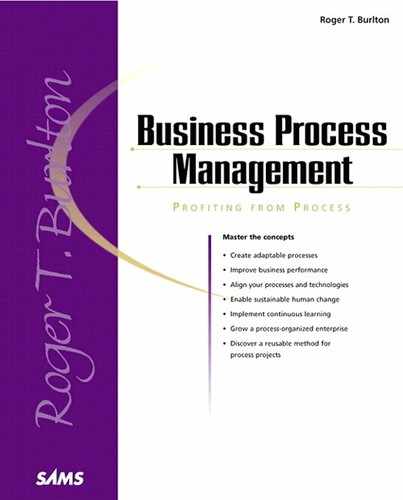Envisioning the Future and Setting Expectations
This step determines and documents the future state (that is, the state at the planning horizon chosen) of the “Organization-in-Focus.” This occurs from the perspective of the chosen stakeholder groups, whose expectations will set the stage. Along with the principles and values, performance improvement targets, and critical success factors, this knowledge represents the target of the change initiative program and provides the criteria for later decision making.
Refer to Figure 10.7 for an example of the knowledge produced as a result of envisioning the future (see the left “Expectation” section).
Techniques
This step is best served by visioning approaches that place the observer in the future at the end of the planning horizon. Such approaches include
- Interviewing
- Workshop facilitation
- Time-machine visioning (explained in a little bit)
Lessons Learned
The stakeholder visioning technique is often referred to as time-machine visioning because it represents the equivalent of placing yourself in a time machine and going to the future when all is accomplished from the change program. Hypothetically, the stakeholders are asked to describe their relationship with the organization at that point, in terms of what attributes they recognize, value, and want.
For each stakeholder group at the chosen level of decomposition, answer the question “What will you say when we’ve delivered the new business environment at the end of the planning horizon?” Up to 10 crisp statements should be listed. Some might be the same for more than one stakeholder—for example, a customer might say something that the owners might also value. Consolidate all perspectives and create a living vision of the future of the business made possible by the successful completion of the transformation program.
Note
Envisioning doesn’t always produce statements of desirable results from the point of view of the stakeholder because perspectives are often contradictory. What might be good for a customer might not be so good for a supplier. The exercise must balance out these conflicts and reconcile the responses as to what the “Organization-in-Focus” wants the stakeholder expectations to be, consistent with its mission, vision, and value proposition.
